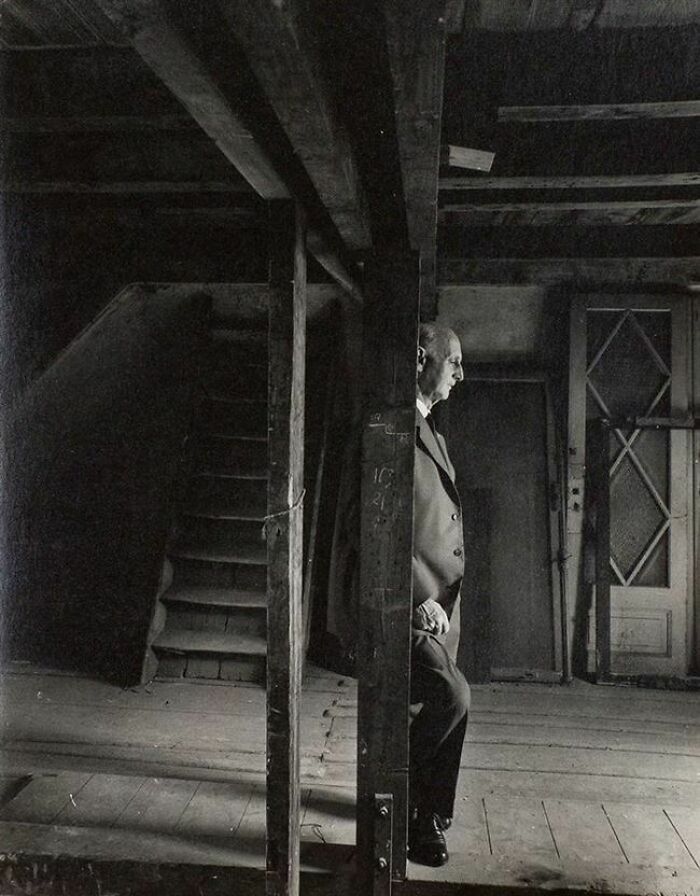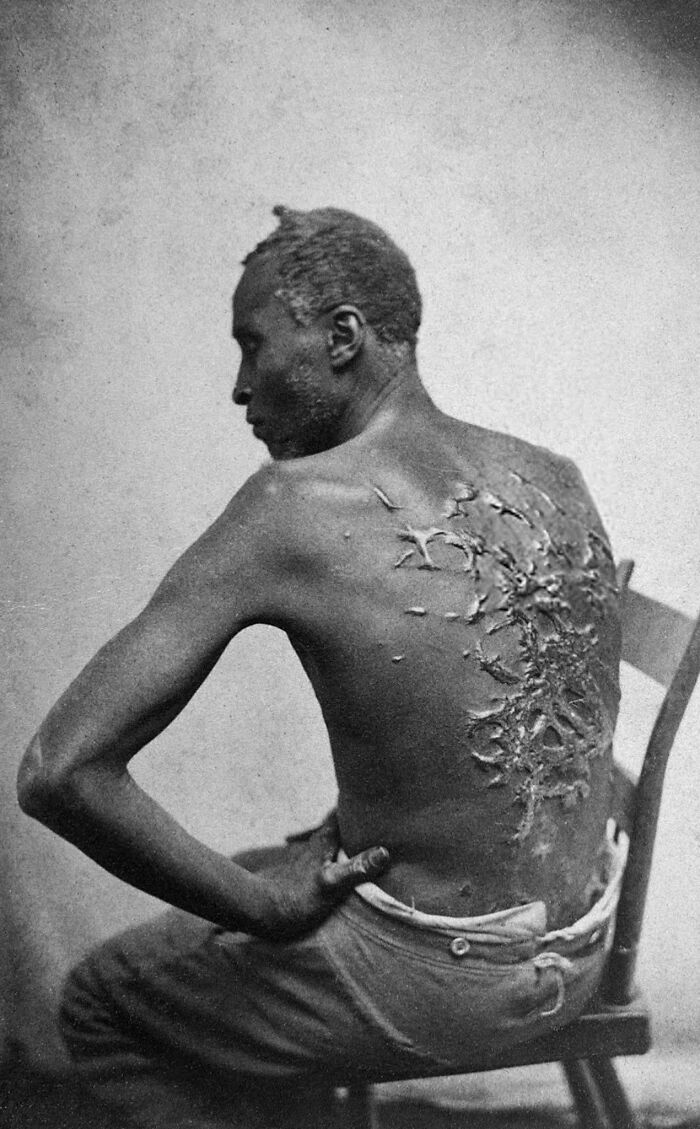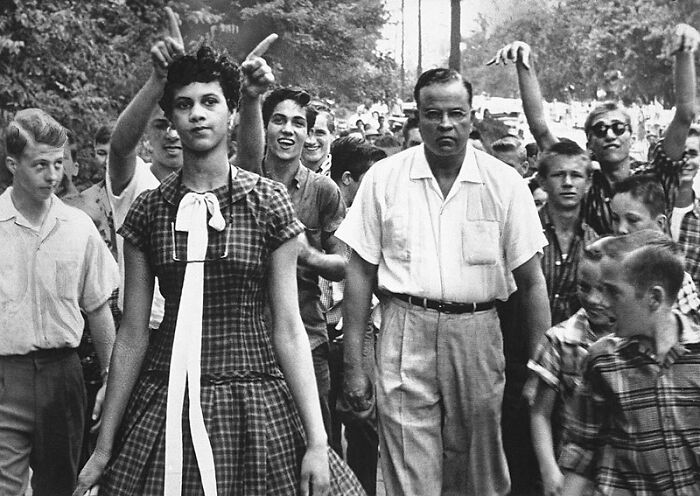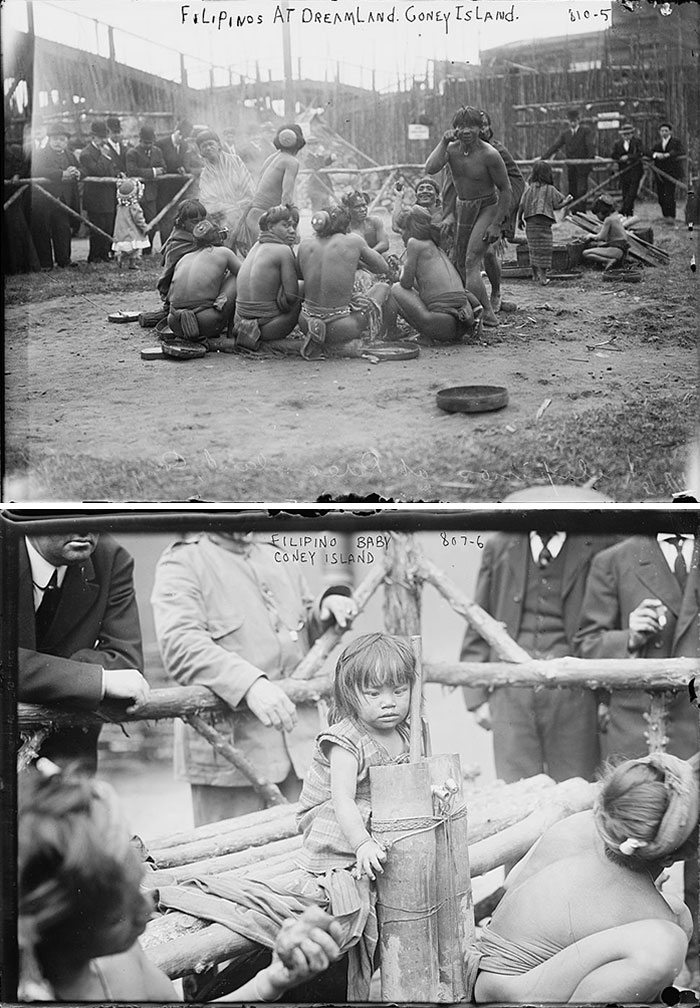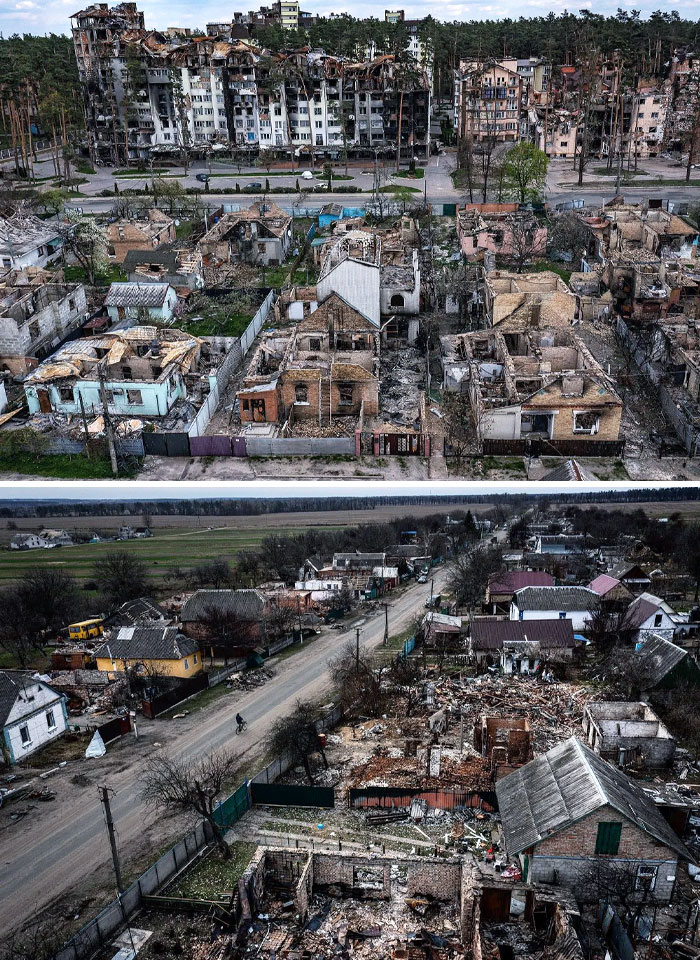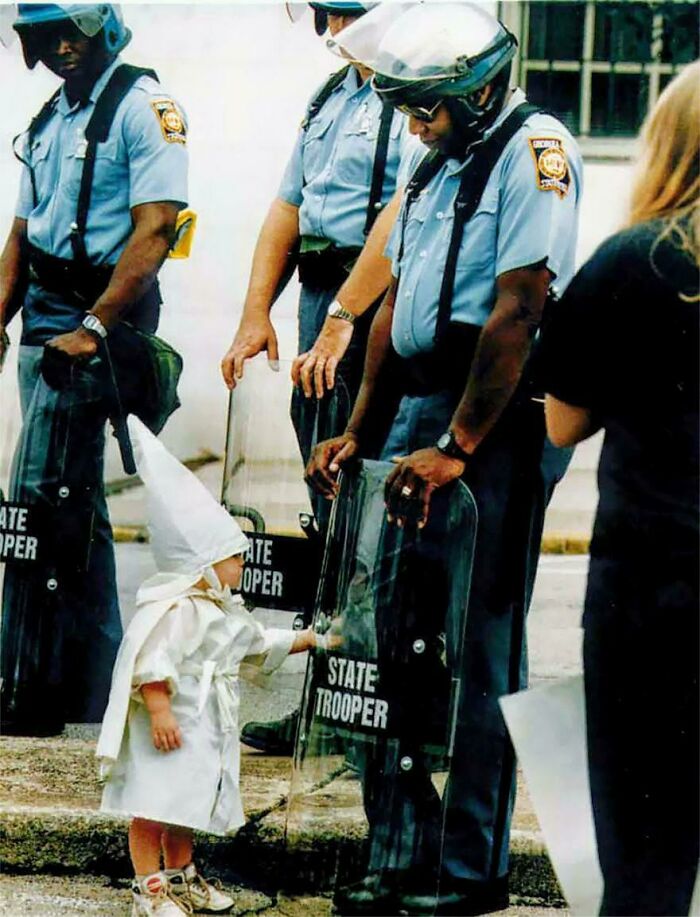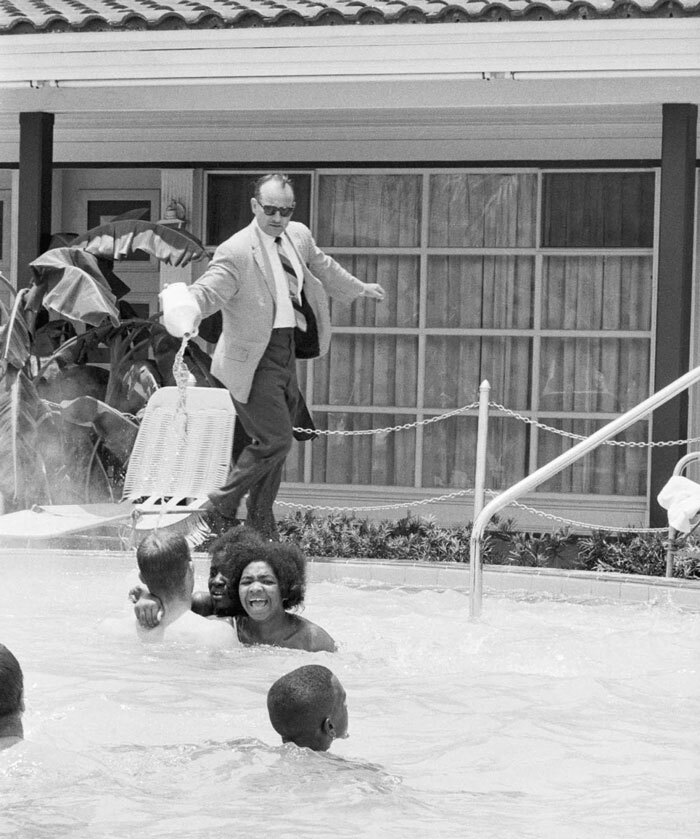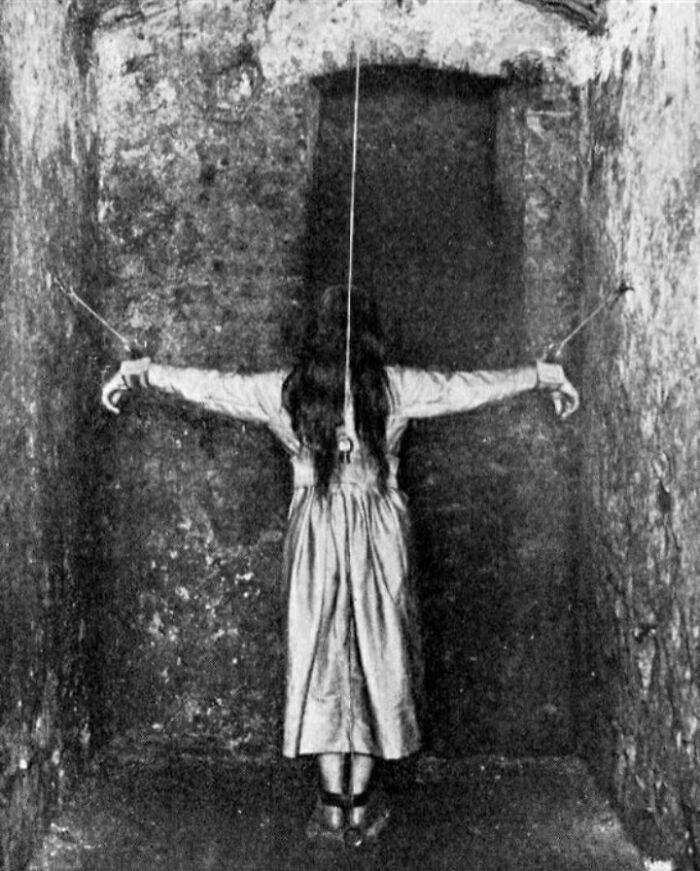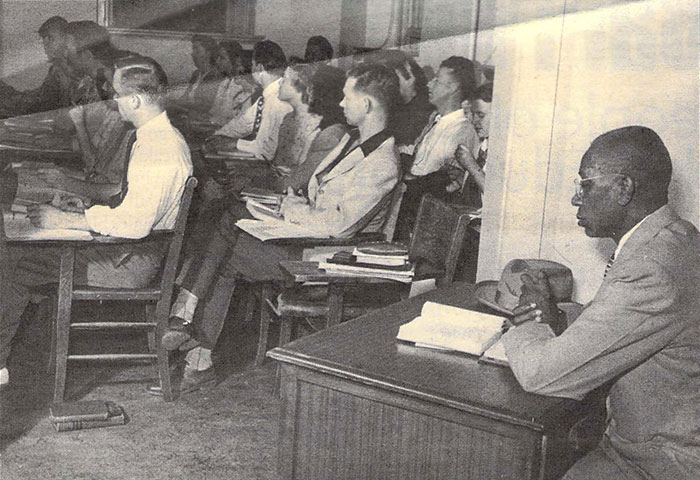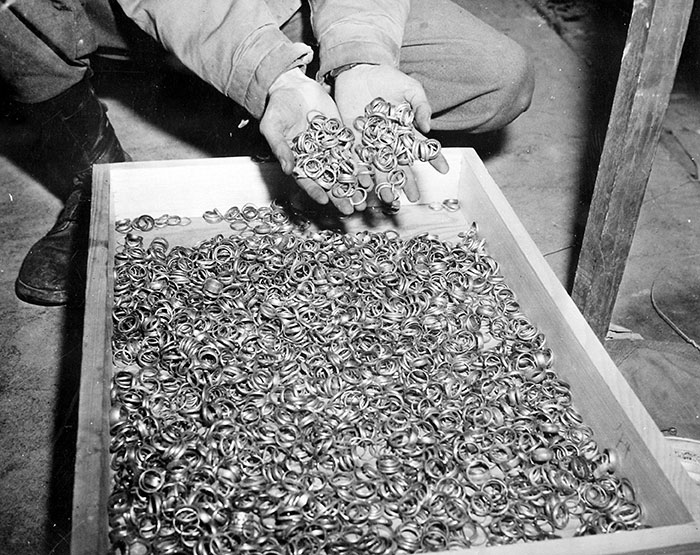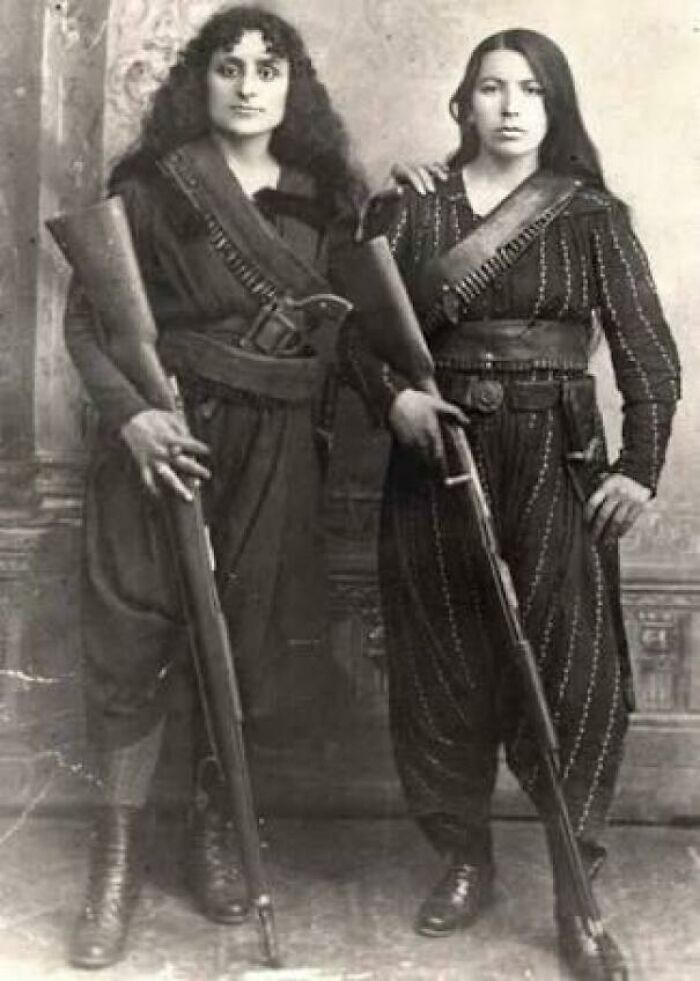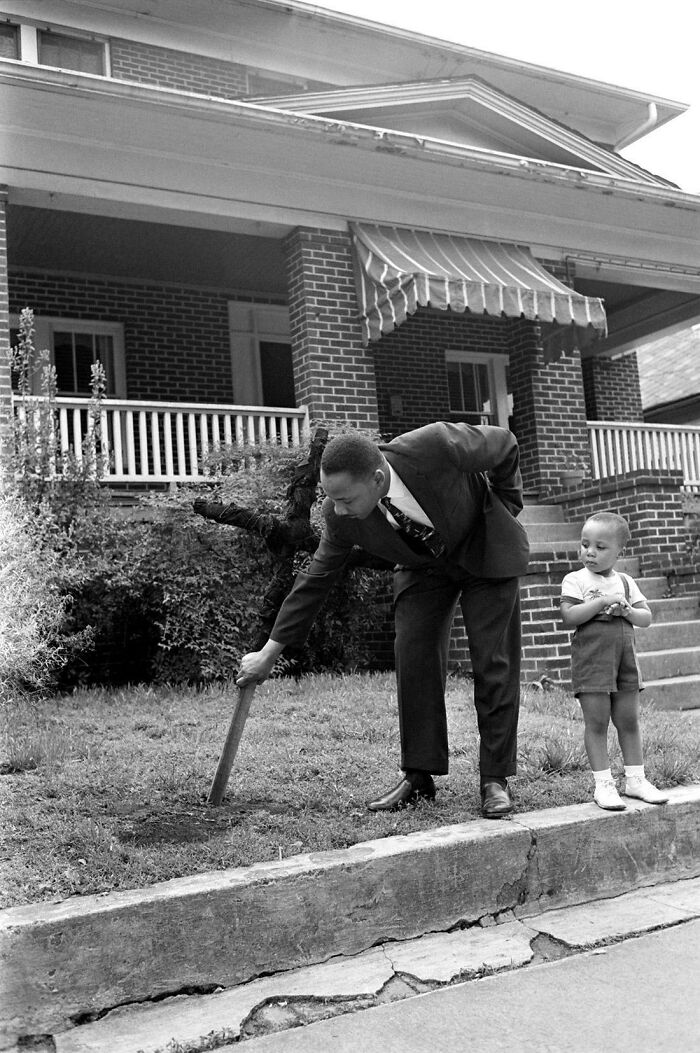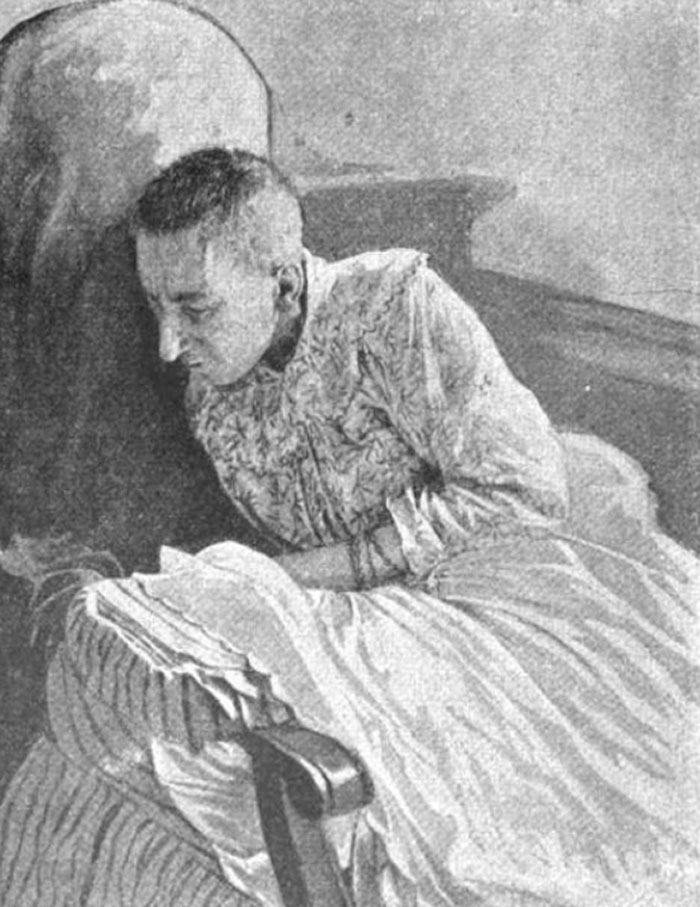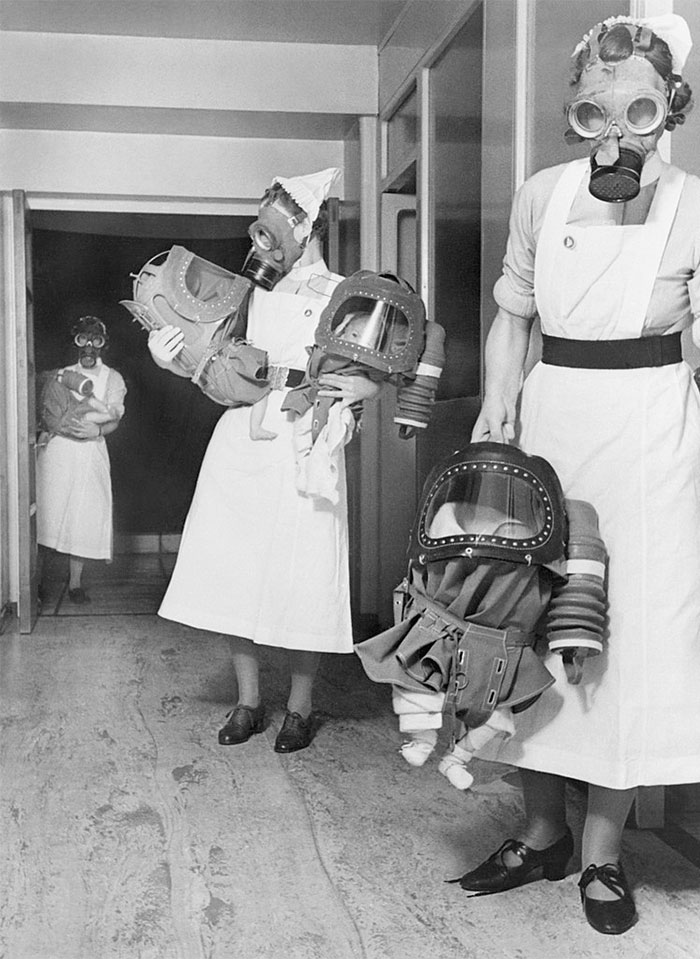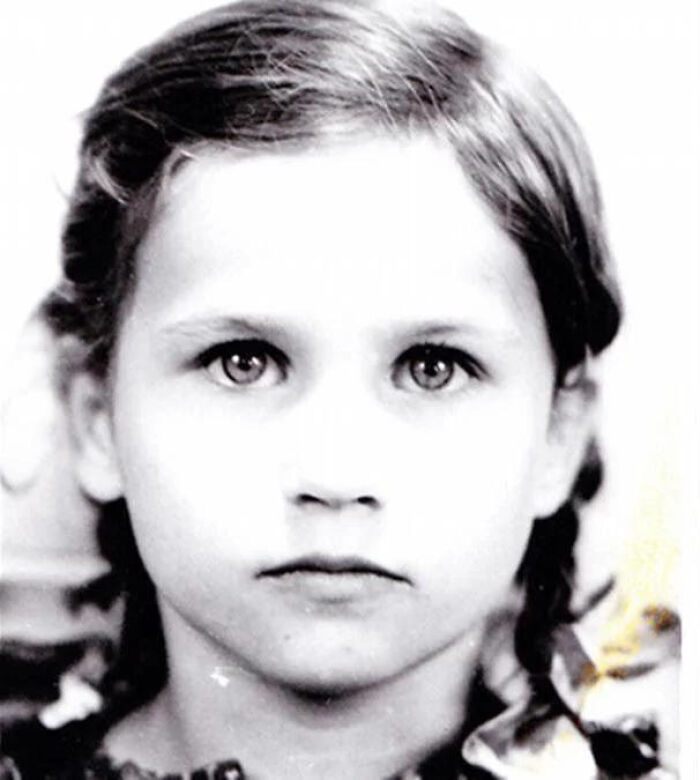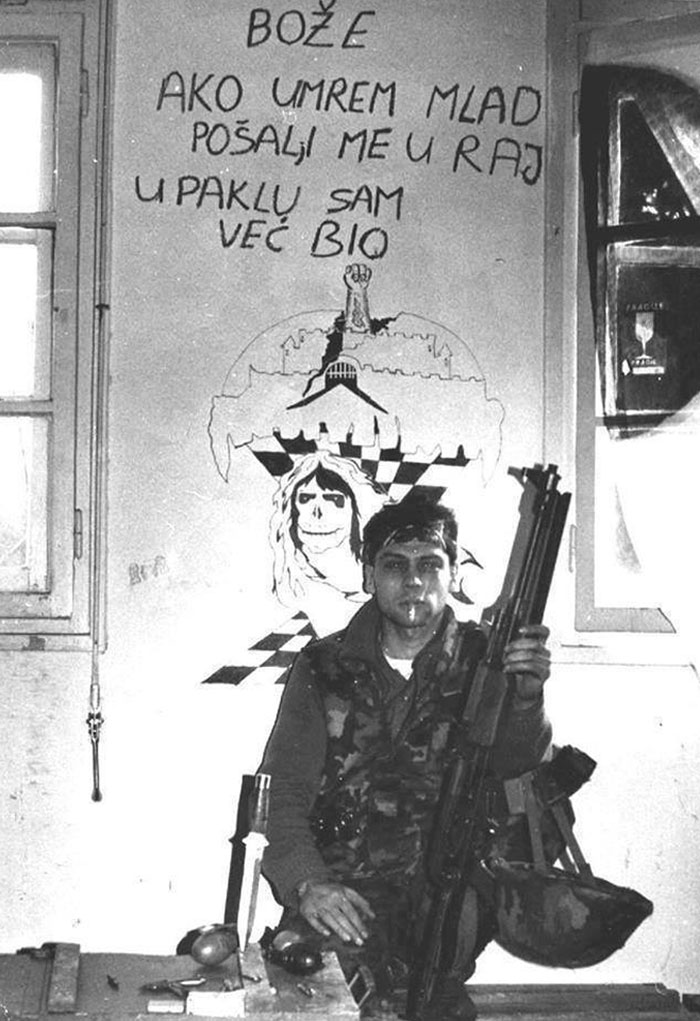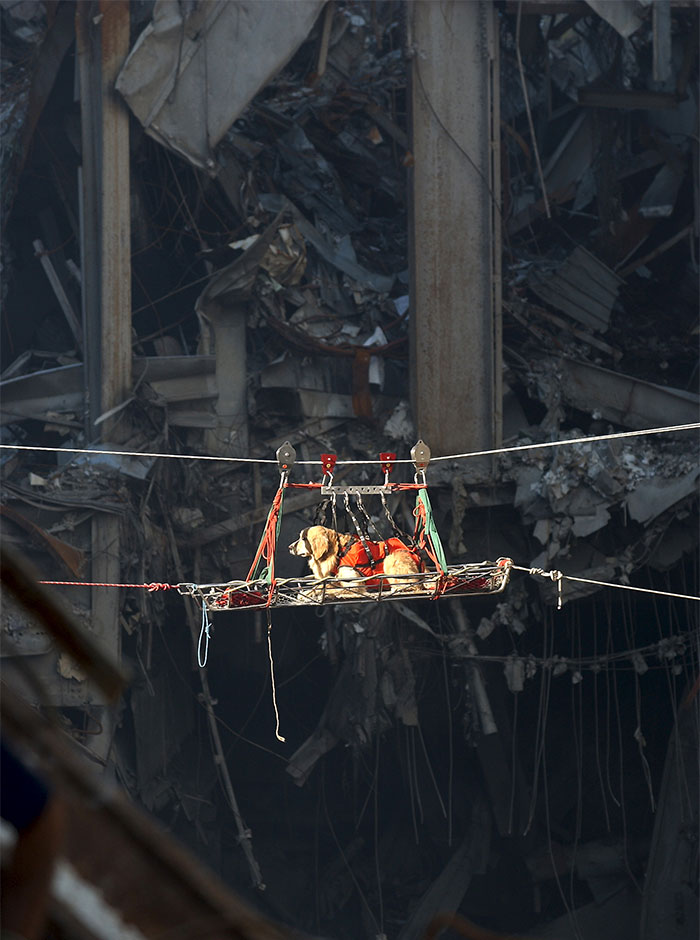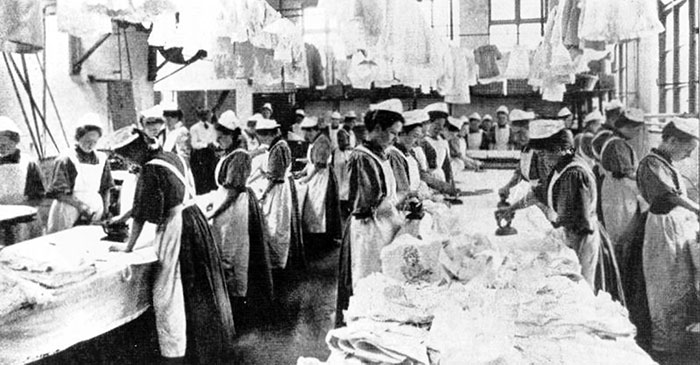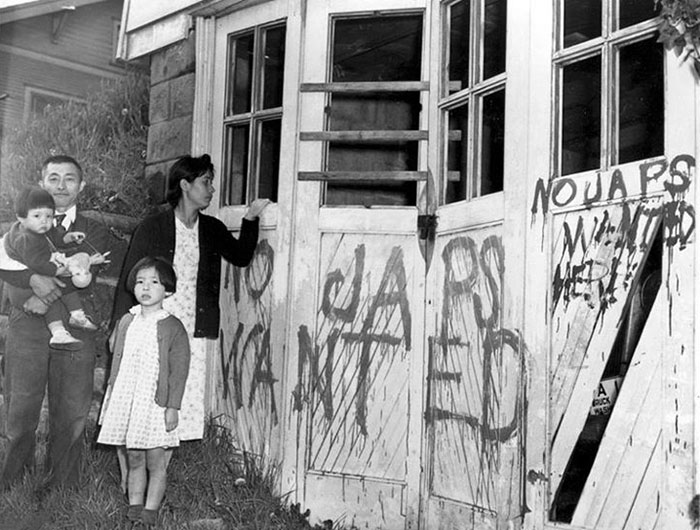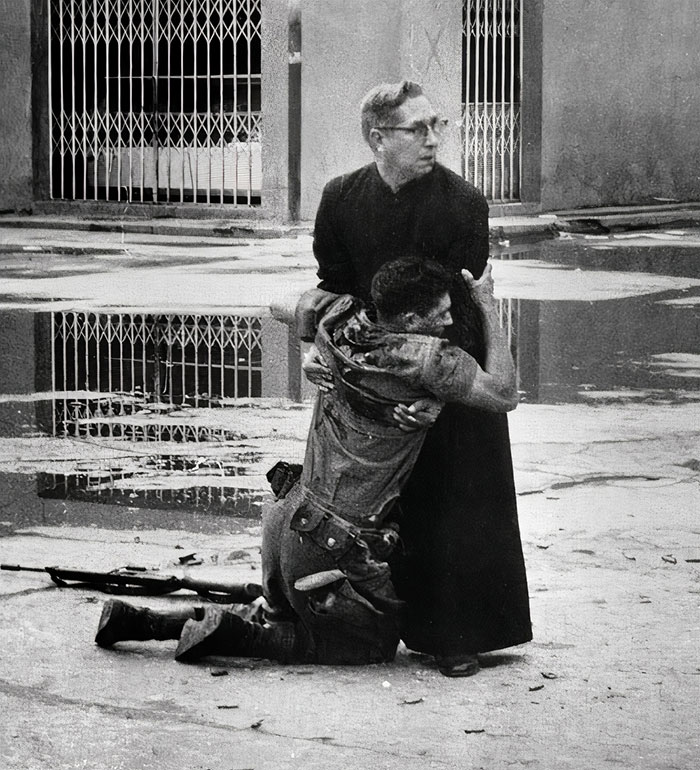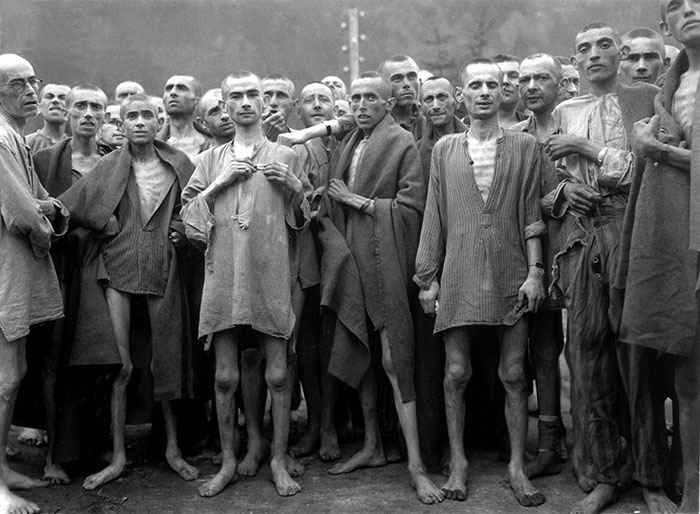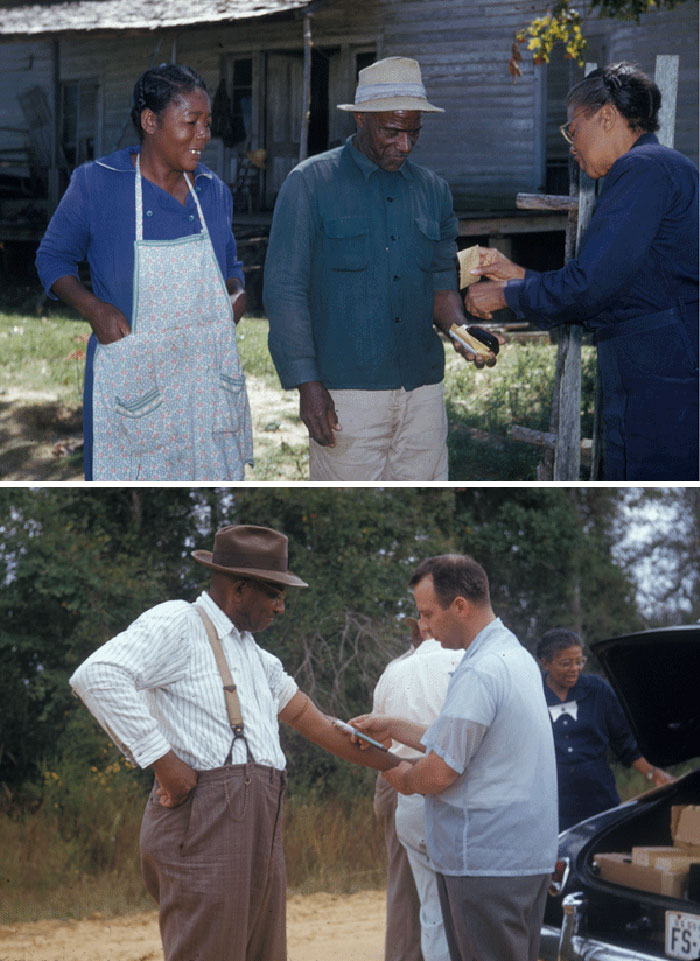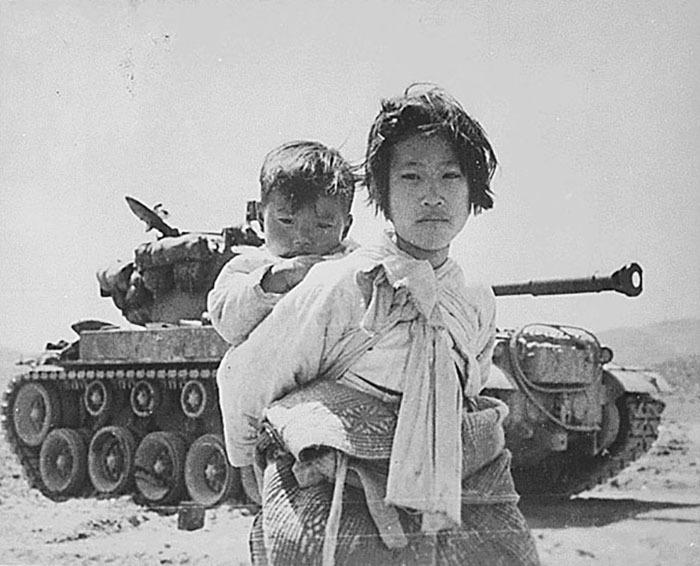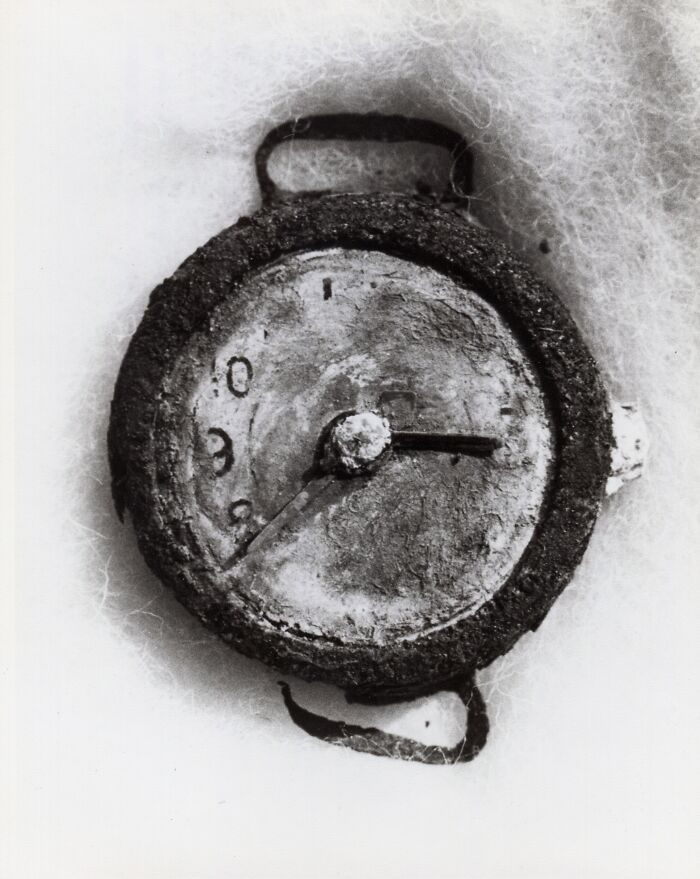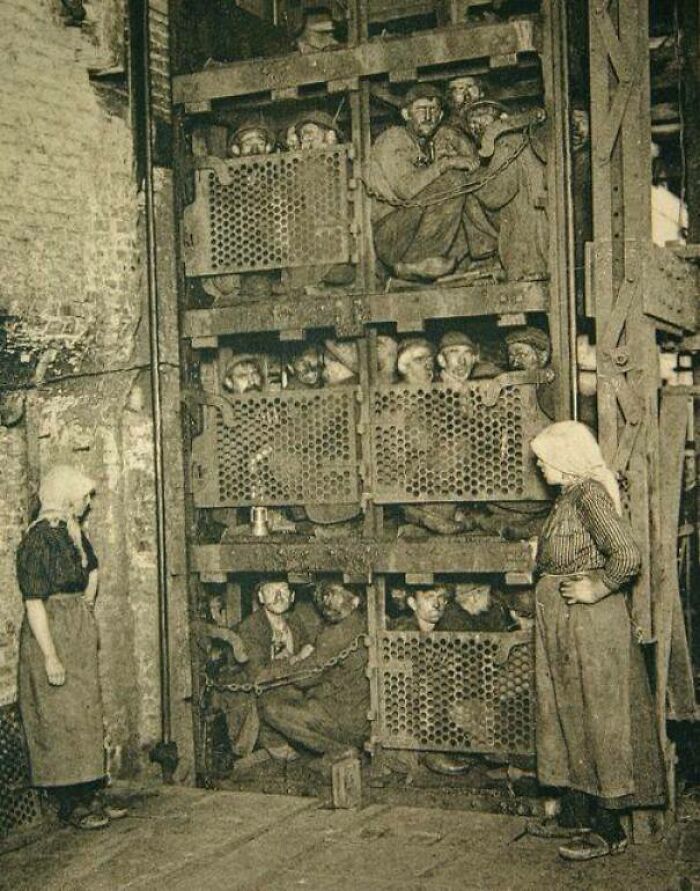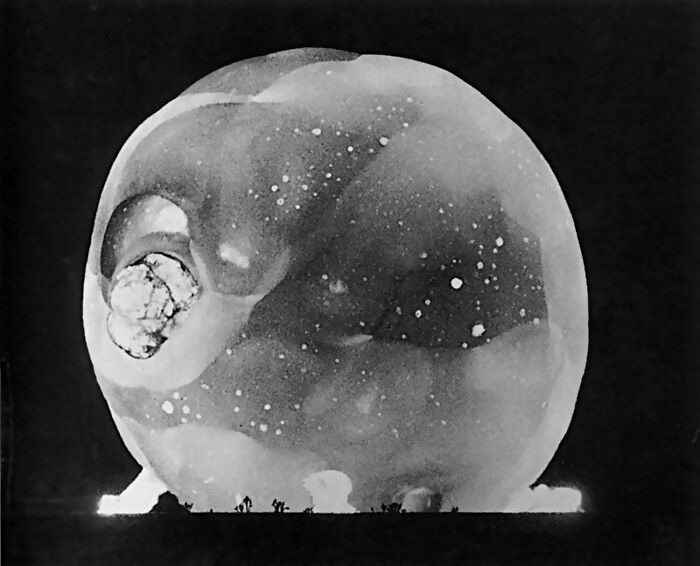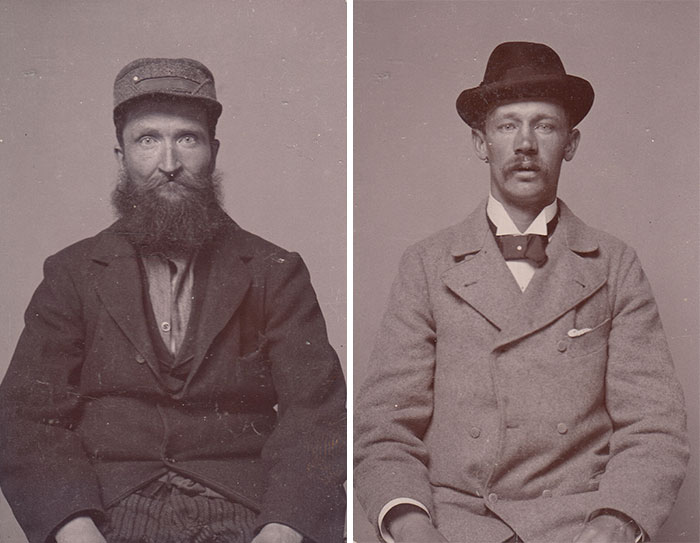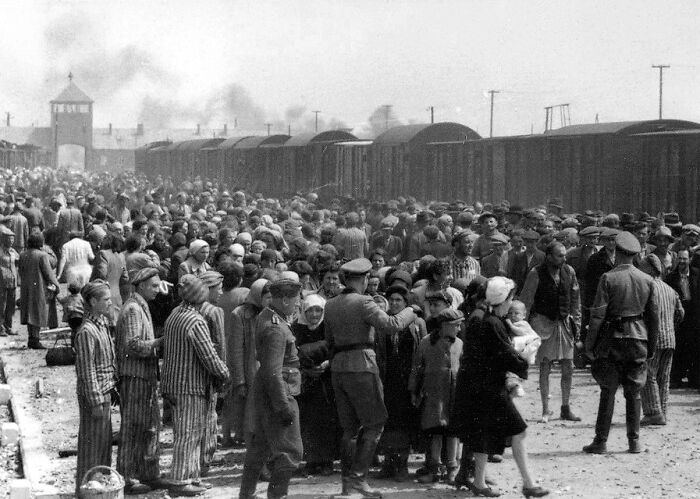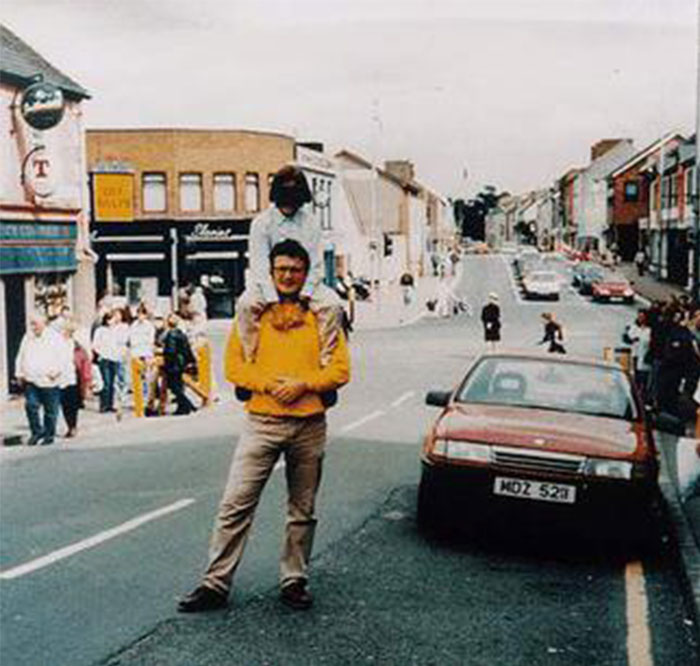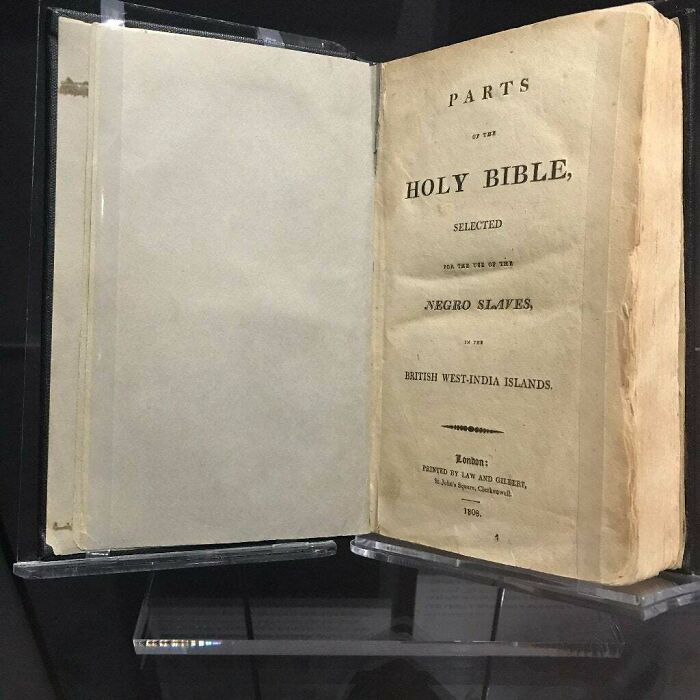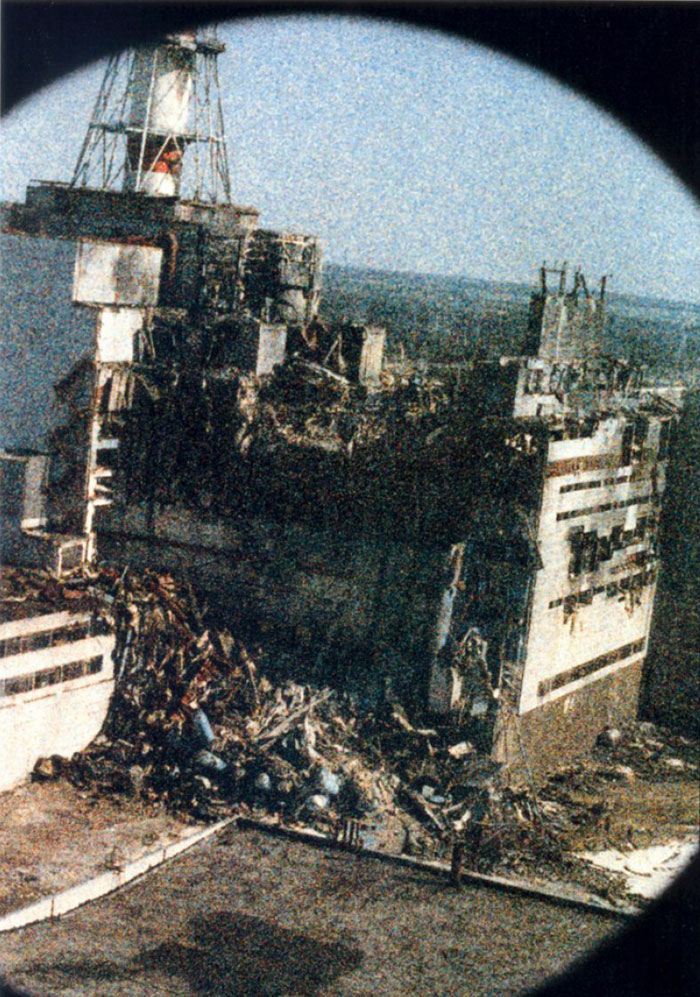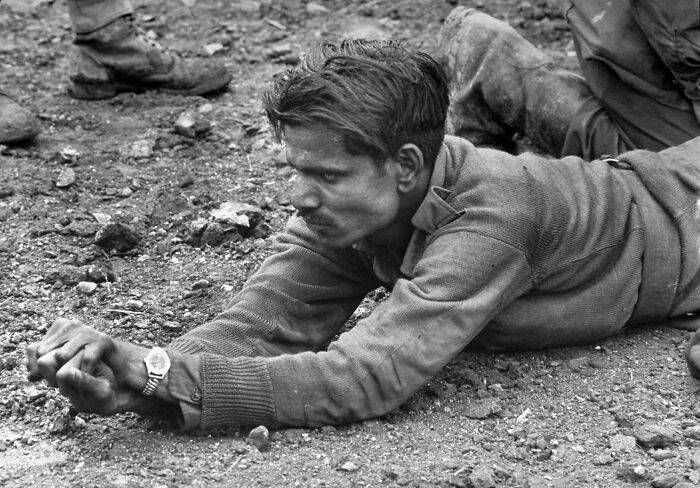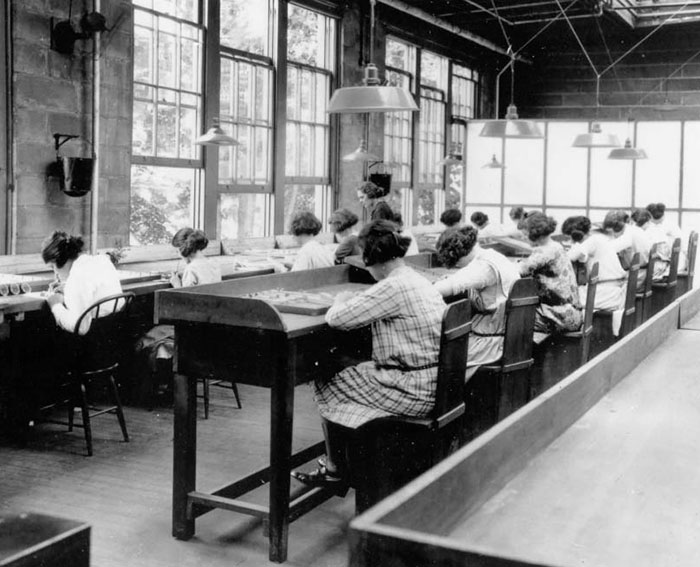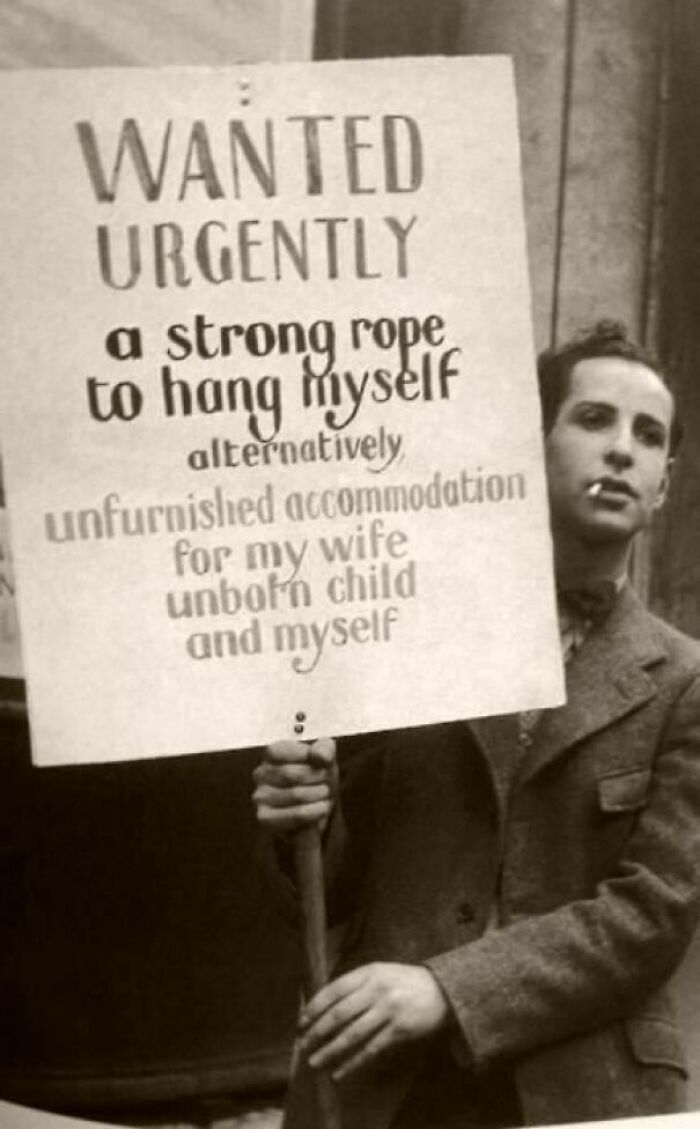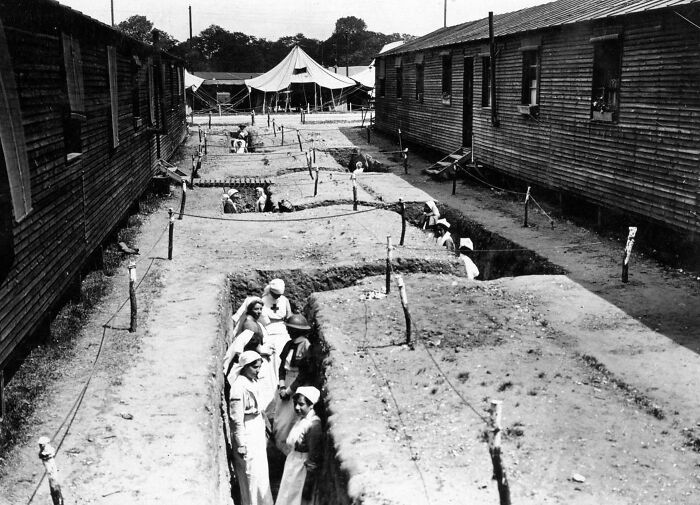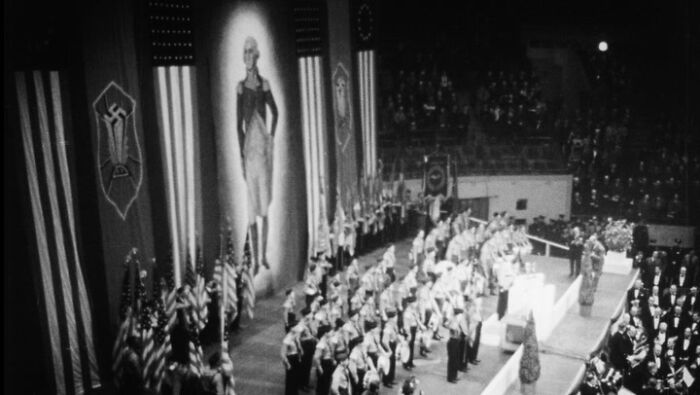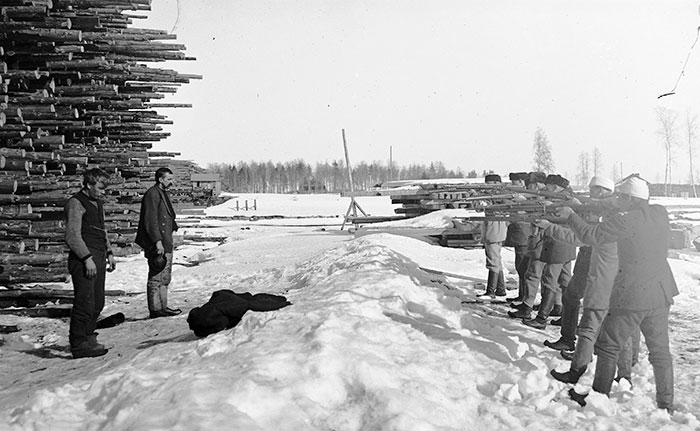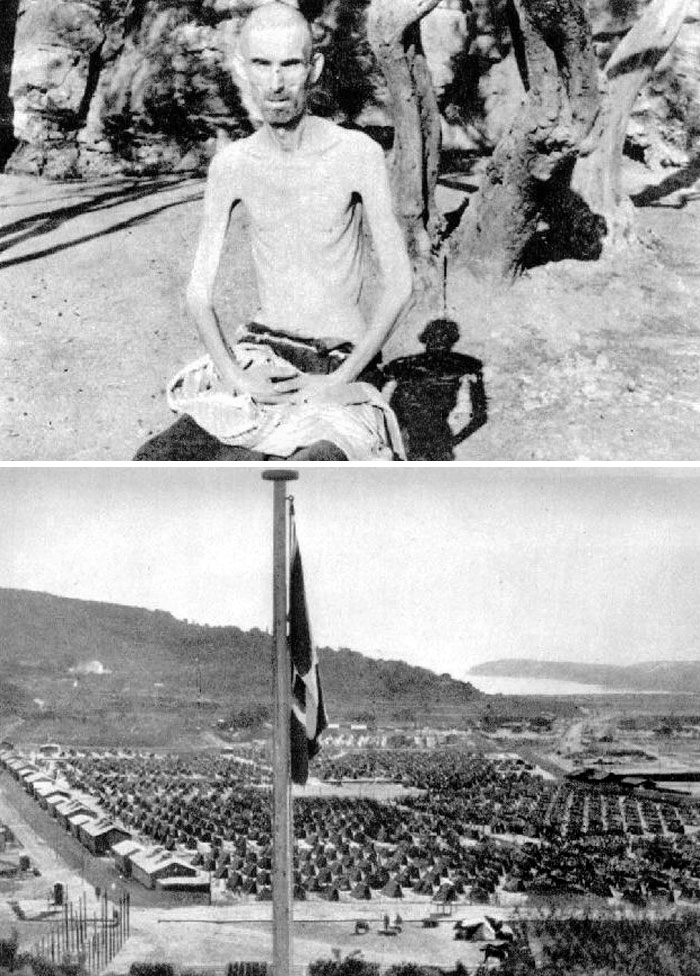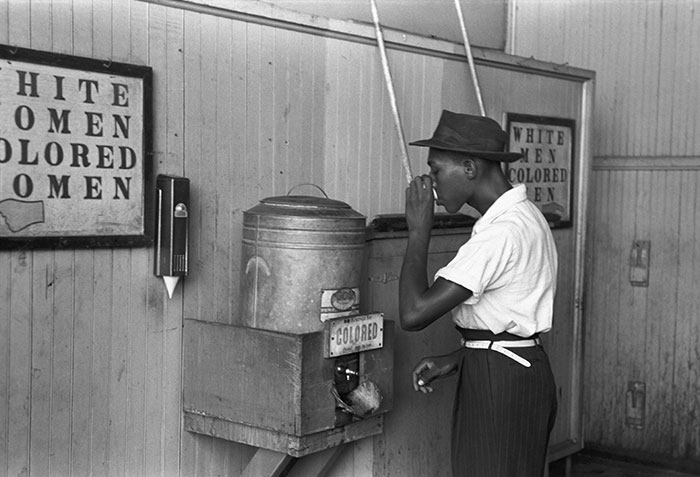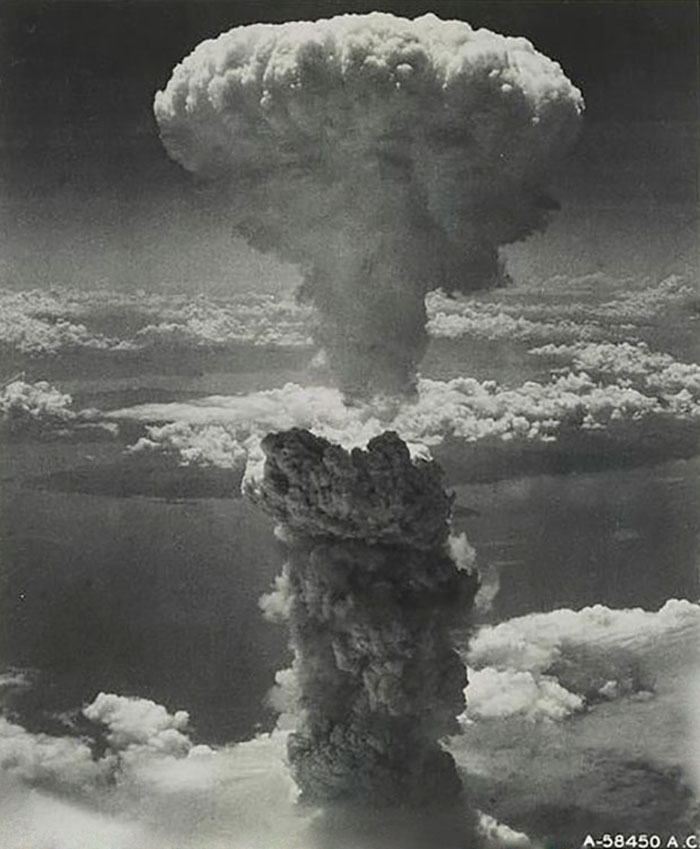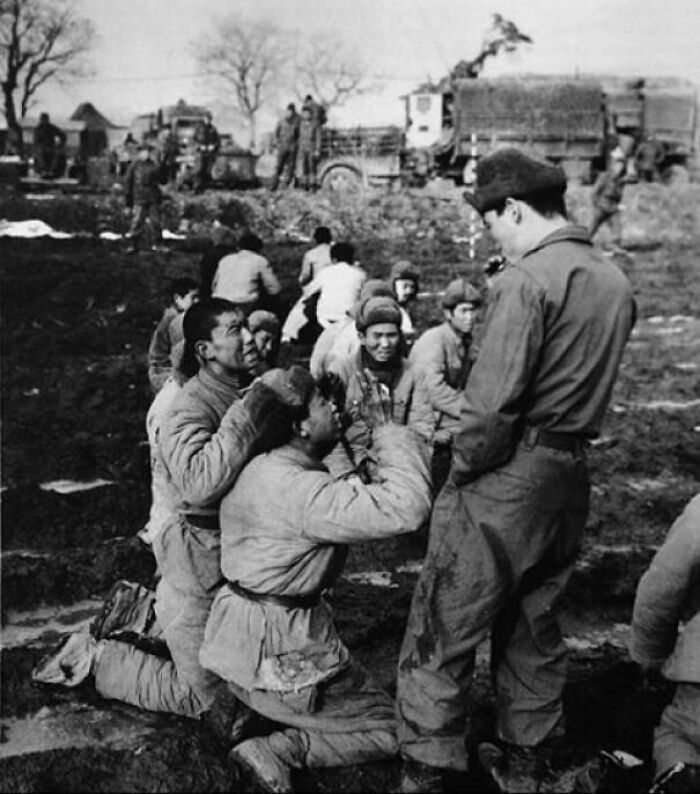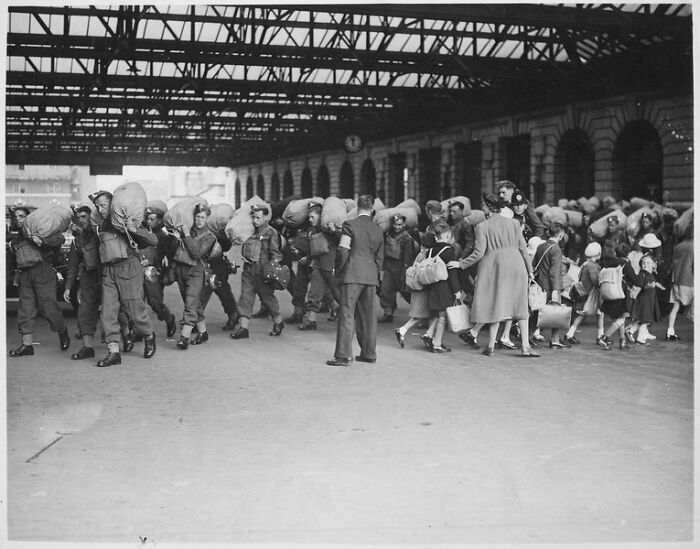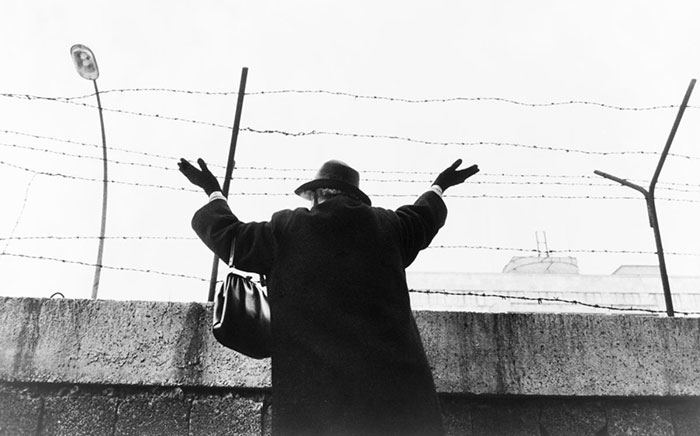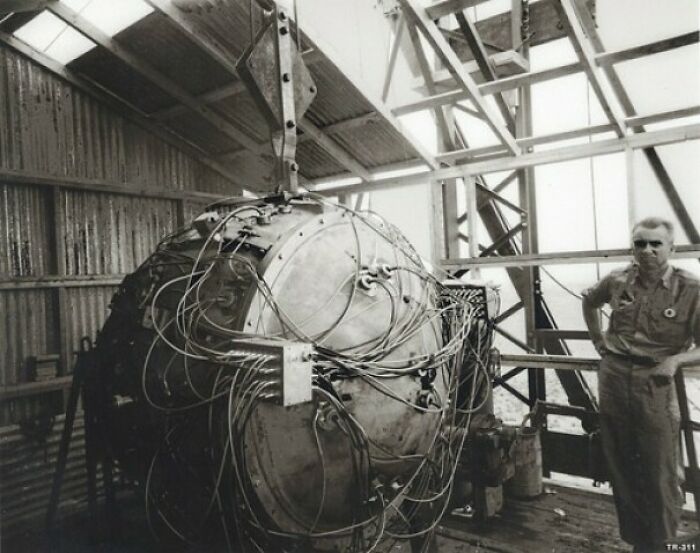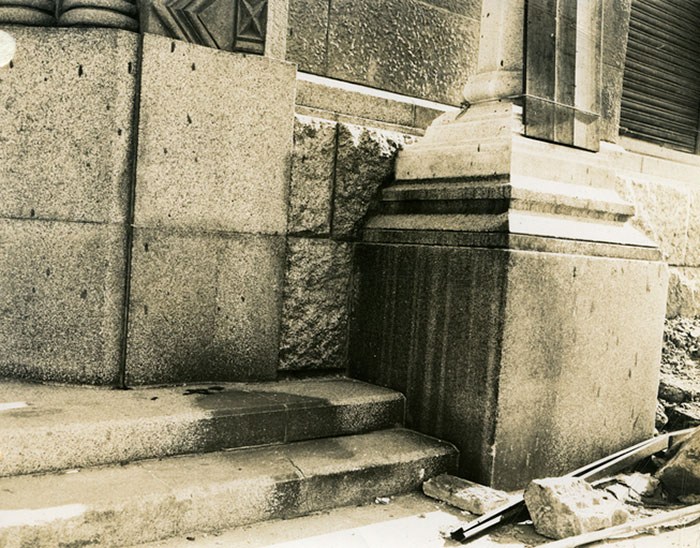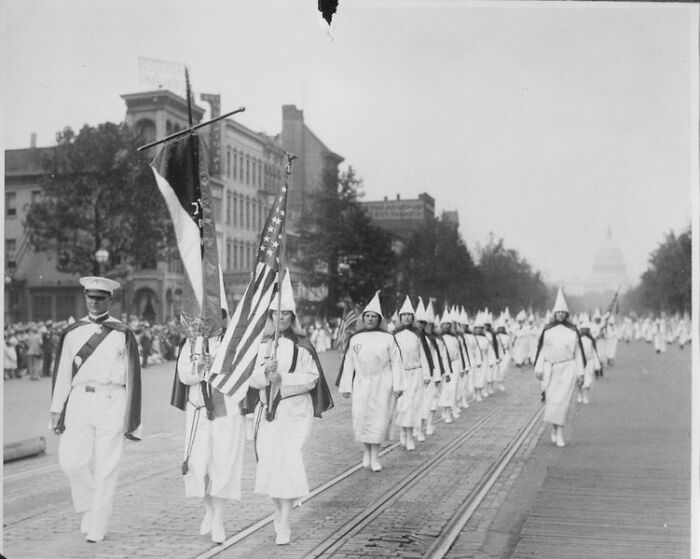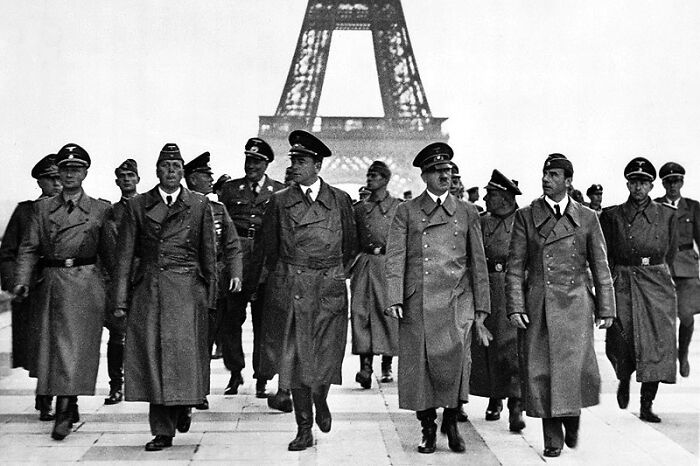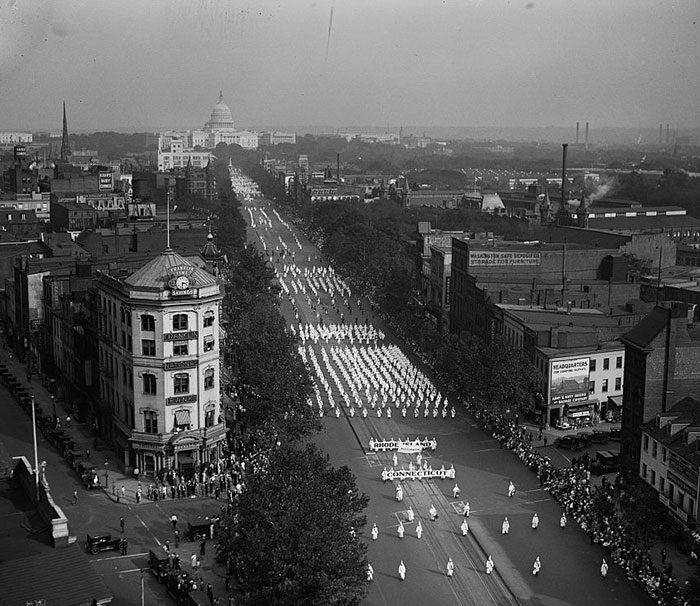We’ve gathered a list of disturbing and painful historical photos down below, so we can all shine a light on some of the most unsettling parts of the world’s past. I will warn you, some of these photos are hard to see, but many of them capture important moments in history that we cannot allow ourselves to forget.
Although it is fascinating and informative, I understand that this list is a bit heavier than many of Bored Panda’s other publications. So after you have taken a moment to look back on these heartbreaking photos, we recommend checking out this article featuring some lighter moments from history that might bring a smile to your face and restore a bit of your faith in humanity.
#1 Anne Frank’s Father Otto, Revisiting The Attic Where They Hid From The Nazis. He Was The Only Surviving Family Member (1960)
Later the photographer Arnold Newman recalled taking of this photo: “The mood was depressing, and I immediately began photographing him. After a few moments, the Westertoren bells next door began to ring, and Frank turned to me and said: ‘Those were the bells that Anne wrote about.’ He suddenly broke down completely, weeping uncontrollably, and then so did I. We never met again. To this day when I lecture or tell this story to people, I find I choke up; I still can’t help myself.”
Image credits: Arnold Newman
History is the most exciting story ever told. It has infinite characters, the plots are true yet often unbelievable, and there is something for everyone: romance, intrigue, suspense, comedy, tragedy, and more. But the most exciting and cheerful moments are what many of us like to focus on, as to not feel guilt or shame for our ancestors’ actions. Sometimes, however, we need a reminder of some of the darkest moments to humble ourselves and be reminded that nothing is impossible. If these events took place once, they are likely to be repeated unless we collectively agree to stop them.
This list features some upsetting and disturbing photos, but they are parts of the past that cannot be forgotten. Of course, every country and group of people has their own unique history, so we are not all responsible for racism or genocide. But continuing to stay aware of these tragedies of the past can keep them in the past. Especially if your people were the victims in some of these horrific, photographed events, this list might not be for you. But for my fellow pandas who can handle these disturbing photos, strap in for your dark history lesson of the day.
#2 Runaway Slave Peter, Exposing His Severely Whipped Back
Peter had received a severe whipping for undisclosed reasons in the fall of 1862. Peter escaped in March 1863 from the 3,000 acre plantation of John & Bridget Lyons, who held him and 40 other people in slavery at the time of the 1860 census.
Baton Rouge, La., 2 April, 1863: “Overseer Artayou Carrier whipped me. I was two months in bed sore from the whipping. My master come after I was whipped; he discharged the overseer. The very words of poor Peter, taken as he sat for his picture.”
Image credits: JaeSolomon
#3 Dorothy Counts, The First Black Student To Attend An All-White School In The United States. Shown In This Photo Teased And Mocked By Her White Male Classmates
Image credits: Wikimedia Commons
Among the many terrible events humans have caused throughout history, the Holocaust is certainly one of the most famous. As 6 millions Jews were murdered at the hands of the Nazis, as well as countless other disabled people, gay people, Slavs, Romani people, and anyone who opposed Hitler openly, the Holocaust is an extremely dark time to look back on. However, it is very important that the history of World War II and the Holocaust are still taught, today and for generations to come.
According to the Montreal Holocaust Museum, we must be educated on this horrific event to understand the impact of history on our society. It was a shocking atrocity that helped transform international politics and justice, as people did not know the warning signs to look out for until it was too late. It seems so blatantly obvious that what the Nazis were doing was wrong, but the fact that it ever happened in the first place cannot be overlooked. We have since used this event to study democracy, dictatorships, propaganda, genocide, intervention, resistance, to try to ensure that it never happens again.
#4 Human Zoos Existed. These Photos Taken In 1904, Where Us Government Imported 1,300 Indigenous Filipinos From Different Tribes To Display At The St. Louis Exposition In 1904
Filipino Zoo Girl was displayed at the Coney Island Zoo in 1904. She was a zoo attraction among the monkeys and lizards to show off the new US possessions in the Philippines. She was bound by ropes. Visitors threw her peanuts.
Image credits: Library of Congress
#5 War In Ukraine
Image credits: dguttenfelder
#6 The Dog Tags Of 58,307 US Soldiers Killed During The Vietnam War At The Harold Washington Library Center, Chicago
Image credits: sasha_man123
The Montreal Holocaust Museum also notes on their website that even though this was a horrific time in history, the most important thing to focus on when discussing the Holocaust is the victims. The people who lost their lives, family members, and homes are important to talk about because it can be hard to relate to ridiculously large numbers and sterile statistics. The stories of individuals should be told, so we can relate and empathize with the experience they endured as human beings. Millions of people were subjected to unimaginable torture, pain and loss, and their stories cannot be forgotten.
Lists like this help us empathize with those who have suffered immense trauma in the past. It is one thing to hear about atrocities, but it can be far more impactful to see the faces of the people who had limbs blown off in war, were enslaved due to the color of their skin, or were the perpetrators inflicting this pain on others. When we see these dark parts of history through photographs, we cannot deny the harsh reality that these events took place.
#7 A Ku Klux Klan Child And A Black State Trooper Meet Each Other, At A Klan Rally Protest In Gainesville, GA (1992)
Innocence is mixed with hate. The toddler approached the trooper, who was holding his riot shield on the ground. Seeing his reflection, the boy reached for the shield.
Image credits: Todd Robertson
#8 Motel Manager James Brock Pours Muriatic Acid In The Monson Motor Lodge Swimming Pool, To Get Black Swimmers Out Of The Pool. June 18, 1964
Image credits: curlysas
#9 A Patient Undergoing Treatment For Mental Illness, Germany 1890
This 1890 photo depicts a woman forced into a crucifixion pose and facing a wall. The woman is a patient at a mental institution, undergoing treatment. Believe it or not, forced standing was considered a legitimate part of treatment for mental illness in 19th century Germany.
Image credits: unknown
It is important for us to be educated on the bleakest moments in history, so we can prevent them from being repeated. And while Germany has made an enormous effort to reconcile with the world following the events of World War II and to ensure their citizens are educated about the dangers of dictators and fascism, not every nation has learned to bring their darkest moments to light. In the United States, for example, everyone is taught about slavery in school, to an extent. But last year, Republican lawmakers in several US states filed bills attempting to cut funding to schools and colleges teaching lessons from the New York Times’ 1619 Project, curriculum which “aims to reframe the country’s history by placing the consequences of slavery and the contributions of Black Americans at the very center of the United States’ national narrative”. Slavery is allowed to be taught in schools, but some lawmakers aim for it to be taught only through a specific and curated lens that paints the nation in the most flattering light.
#10 George McLaurin, First African-American Student Admitted To The University Of Oklahoma, Forced To Sit Apart From White Students. 1948
Image credits: toshiro-mifune
#11 A Few Of The Thousands Of Wedding Rings The Nazis Removed From Holocaust Victims To Salvage The Gold
The U.S. troops found rings, watches, precious stones, eyeglasses, and gold fillings, near Buchenwald concentration camp. 1945 May 5.
Image credits: Wikimedia Commons
#12 Two Armenian Counter-Militias Fighting The Armenian Genocide Perpetrated By The Turkish Ottomans. 1915
Image credits: getronagan
The 1619 Project, which was created by Nikole Hannah-Jones and first published in 2019, won the Pulitzer Prize for commentary. It is a comprehensive guide featuring audio, essays, poems, graphics and visual art pieces that many Americans were not taught or exposed to from their traditional history books. But as race relations continue to be an issue in the United States, as racism persists against Black citizens even today, students (and adults for that matter) can certainly benefit from a more in-depth history lesson on slavery. Yet some people still want to gloss over the more shameful details of the nation’s past as to not acknowledge its wrongdoings. “Do we want historical facts and details that are researched and published by experts taught? Or do we want nationalism taught?” asks T. Jameson Brewer, an assistant professor at the University of North Georgia. “That’s a very scary sort of suggestion, that schools would engage in ideological nationalism for political needs.”
#13 Martin Luther King Jr. With His Son, Pulling Up A Burnt Cross From The Front Lawn Of His Atlanta Home, April 1960
Image credits: cnn.com
#14 Blanche Monnier Was A Woman From Poitiers, France, Who Was Secretly Kept Locked In A Small Room By Her Aristocratic Mother And Brother For 26 Years
She was eventually found by police, then middle-aged and in an emaciated and filthy condition; according to officials, Monnier had not seen any sunlight for her entire captivity.
Image credits: Wikimedia Commons
#15 WWII Gas Masks For Babies
Throughout World War II, the threat of chemical warfare frightened citizens and soldiers across Europe. To prepare for a possible gas attack, civilians could have protected themselves with gas masks. But what about children and infants who were too small to wear a conventional mask? This eerie 1940 photograph shows nurses testing out new “gas masks” for babies.
Image credits: Wikimedia Commons
Unfortunately, some states do push for patriotic education over the teaching of facts. In November 2020, Governor Reeves of Mississippi proposed spending $3 million on a ‘Patriotic Education Fund’ that would encourage schools and nonprofits to apply for funding to “educate the next generation on the incredible accomplishments of the American Way”. And if your impulse is to give Governor Reeves the benefit of the doubt, that maybe he just loves his country and did not mean that the way it sounds, you might be interested to know that one of the budget proposals stated, “Across the country, young children have suffered from indoctrination in far-left socialist teachings that emphasize America’s shortcomings over the exceptional achievements of this country.” Turning a blind eye to a nation’s past mistakes is a surefire way to guarantee that they are repeated in the future, yet Governor Reeves does not seem concerned about that.
#16 A Photo Of Zyta Sus, One Of Hundreds Of Thousands Of Children Who Were Kidnapped By The Nazi Regime
After being deemed “desirable”, she received a new identity and was given up for adoption. After the war, Zyta was taken to an orphanage. She never found her real family. 1942, Poland.
Image credits: lightiggy
#17 Croatian Soldier In Front Of A Wall That Says “God If I Die Young Send Me To Heaven In Hell I Have Already Been”
#18 A Rescue Dog Is Transported Out Of The Debris Of The World Trade Center. The Twin Towers Of The Center Were Destroyed In A September 11 Terrorist Attack
Image credits: Preston Keres
We all know that sweeping issues under the rug does not make them disappear. Whether it’s an argument with our significant other that we’ve been avoiding out of fear of confrontation or the painful past of a nation, refusing to address a problem only exacerbates it. It may take time for history to repeat itself, but it naturally does, unless something is done to prevent it. “You cannot heal divisions by pretending they don’t exist,” says James Grossman, the executive director of the American Historical Association. “The way to address divisions is to understand the history of those divisions.” A great way to confront the most horrific parts of history is to see photos of them. It may feel like these events took place ages ago, but there is photographic evidence of them. We should not feel too far removed from any of these occurrences.
#19 Magdalene Asylums, Also Known As Magdalene Laundries. Places Of “Reform” For Women That Didn’t Fit The Idea Of A Good Upstanding Citizen
The most well known ones were in Ireland. The women and girls were treated badly by asylum staff, most of whom were nuns.
Image credits: Wikimedia Commons
#20 A Japanese Family Returning Home (Seattle, Washington) From A Relocation Center Camp In Hunt, Idaho On May 10, 1945
Image credits: HistoryInPics
#21 Father Luis Manuel Padilla Holds A Wounded Government Rifleman Shot Down In The Streets Of Puerto Cabello, Venezuela
During a bloody revolt against President Betancourt in June 1962.
Image credits: Hector Rondon
Another reason photos like these are important for people to see is because they show the reality of a situation. Propaganda has run rampant in communities led by dictators like Hitler, but these photos tell the truth of what happened. Regardless of how many times Hitler used fear to create obedience or painted Jews as the enemy of the German people throughout propaganda, we know that he was the perpetrator of pure evil. Joseph Goebbels was also a key player in spreading Nazi propaganda and portraying Hitler as a strong, stable leader that Germany needed to become a powerful nation. He used a variety of media outlets, including newspapers, film, radio and posters to ensure his messages were spread. It is harrowing to hear that people were susceptible to such outlandish propaganda, but the evidence we can see today makes it abundantly clear that atrocities were taking place, regardless of what the leaders were saying.
#22 Ebensee Concentration Camp Prisoners. 1945
Image credits: Wikimedia Commons
#23 Between 1932 To 1972, The US Public Health Department Had Conducted A Study That Deliberately Gave Untreated Syphilis To 399 African Americans
Image credits: cdc.gov
#24 With Her Brother On Her Back, A War-Weary Korean Girl Tiredly Trudges By A Stalled M-26 Tank At Haengju, Korea. 1951-09-06
Image credits: National Archives
Propaganda is still a tactic used around the world today. Vladimir Putin is one of the most blatant users of propaganda, as he claims that the war he is waging in Ukraine is a “special peacekeeping operation”. Materials being taught in Russian schools actually explicitly state that the operation is not a war. In fact, any websites mentioning the war as an invasion, attack or war will be blocked by Russia’s internet censor board. Russia is a frightening example of how propaganda and patriotism are being pushed to the citizens through propaganda, as 83% of the population reported in April 2022 that they support Putin. But those of us who have access to the facts of the situation cannot deny them. There are countless photos, videos and stories from civilians showing that this invasion was unprovoked and certainly not justified.
#25 “A Watch Stopped At 08:15 AM Found In Hiroshima”. August 1945
Image credits: tiggerclaw
#26 Coal Miners In Belgium Crammed Into A Coal Mine Elevator, Coming Up After A Day Of Work, Circa 1900
Image credits: reddit.com
#27 Instant Of Test Nuclear Detonation Captured By Harold Edgerton’s Rapatronic Camera With Shutter Speed Of One Hundred Millionth Of A Second. Circa 1950s
Automatic camera by Harold Edgerton situated 7 miles from blast with 10 foot lens. Shutter speed equaled 1/100,000,000 of a second exposure.
Image credits: synternia
We understand that this list is not as cheerful and fun as some of Bored Panda’s other posts, but it is certainly an important one. Keep upvoting the photos that bring up moments in history you’d like all of your fellow pandas to be reminded of, and then let us know in the comments what dark moments in history always stick with you. And if you need something a bit lighter after finishing this heavy piece, you can check out another list featuring historical photographs right here.
#28 Mugshots Of Two Men Imprisoned For Having Intercourse With Each Other. Stockholm, Sweden In 1897
Image credits: eam2468
#29 Hungarian Jews Being Selected By Nazis To Be Sent To The Gas Chamber At Auschwitz Concentration Camp, Auschwitz Album 1944
Image credits: Wikimedia Commons
#30 Omagh Bombing
The red Vauxhall Cavalier contains the bomb. This photograph was taken shortly before the explosion; the camera was found afterward in the rubble. The man and child in the photo both survived.
Image credits: Wesley Johnston
#31 “Servants, Be Obedient To Your Masters” – The Bible Written For Caribbean Slaves. It Was Edited To Remove Any References To Freedom And To Send A Very Specific Message To Slaves
Image credits: museumofBible
#32 The Earliest Known Picture Of The Chernobyl Nuclear Disaster, Taken Just Moments After The Meltdown And Explosion Of Unit 4 On April 26, 1986
This is believed to be the first photograph ever taken of the accident, and the only photo that survives from that morning. Igor Kostin was a photographer from Kiev who became world famous for his images of the the clean-up operation. Kostin claims the image is very noisy because radiation was destroying the film in his camera. Of all the shots he took on that flight, this is the only one that wasn’t ruined.
Image credits: Igor Kostin
#33 An Ambulance Driver From The Indian Army Clenches His Hands, Indicating The Intense Pain In His Leg Which Has Been Almost Completely Blown Off. Korean War (1951)
Image credits: revolutionbubbletea
#34 All Women And Girls Using Radium Paint With No Protection Or Warnings In 1922
The radium girls were female factory workers who contracted radiation poisoning from painting watch dials with self-luminous paint. After being told that the paint was harmless, the women in each facility ingested deadly amounts of radium after being instructed to “Point” their brushes on their lips in order to give them a fine tip. Some also painted their fingernails, face, and teeth with the glowing substance.
Image credits: Wikimedia Commons
#35 Unknown Man During The Depression, Circa 1932
Image credits: surrenderdorothy
#36 Nurses In Their Bomb Trenches Between Hospital Wards. France 1918
Image credits: pubwithnobeer
#37 Nazi Rally Attended By The 20,000 Americans. Madison Square Garden, 1939
Image credits: grittzcz
#38 Red Rebels Are Being Executed In Varkaus During The Insurrection In Finland In 1918
Image credits: Ivar Ekström
#39 An Inmate At The Rab Concentration Camp
Image credits: Wikimedia Commons
#40 “Colored” Drinking Fountain From The Mid-20th Century With African-American Drinking
Image credits: Russell Lee
#41 Nagasaki, Japan, Under Atomic Bomb Attack
Image credits: Library Of Congress
#42 Captured Chinese Soldiers Beg For Their Lives Thinking That They Are Going To Be Executed, Korea 1951
Image credits: Worthy1
#43 A Scene At A London Railway Station Showing Troops Arriving While Kiddies Who Are Being Evacuated From London Leave
Image credits: Wikimedia Commons
#44 Rear View Of Woman Standing At Berlin Wall, In The West Sector, With Hands Raised. After Waiting Three Hours To See Her East Berlin Friends And Relatives
Image credits: Dan Budnik
#45 The Irrepressible Australians At Anzac. An Australian Bringing A Wounded Comrade To The Hospital. Dardanelles Campaign, Circa 1915
Image credits: National Archives Catalog
#46 The Gadget, The First Atomic Bomb, 1945
Image credits: U.S. Department of Energy
#47 Flash Burns On Steps Of Sumitomo Bank Company, Hiroshima Branch
Image credits: Wikimedia Commons
#48 The Ku Klux Klan On Parade Down Pennsylvania Avenue, 1928
Image credits: Wikimedia Commons
#49 Adolf Hitler And His Entourage Walk Near The Eiffel Tower In Paris On June 23, 1940, Following The Occupation Of France By The Nazis
Image credits: Wikimedia Commons
#50 Ku Klux Klan Parade 9/13/26
Image credits: National Photo Company Collection
Go to Source
Author: Audrius P.
